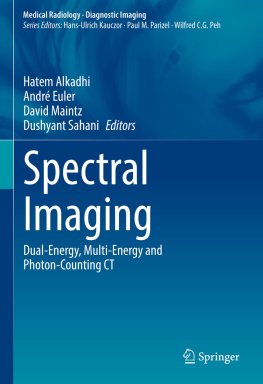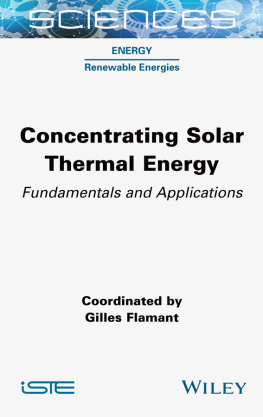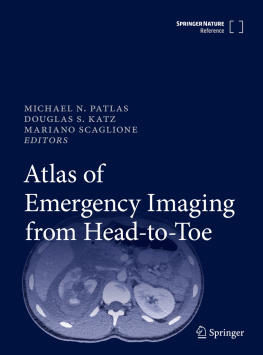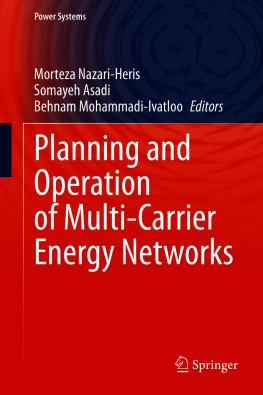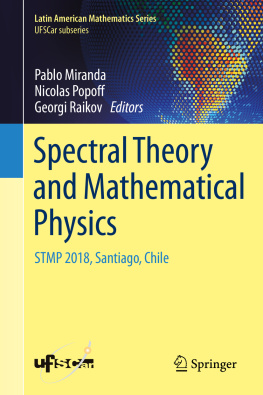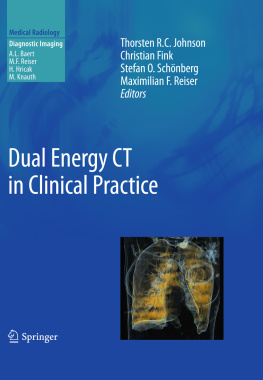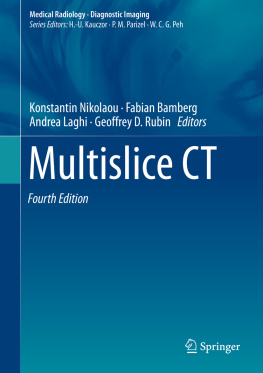Medical Radiology Diagnostic Imaging
Series Editors
Hans-Ulrich Kauczor , Paul M. Parizel and Wilfred C. G. Peh
The book series Medical Radiology Diagnostic Imaging provides accurate and up-to-date overviews about the latest advances in the rapidly evolving field of diagnostic imaging and interventional radiology. Each volume is conceived as a practical and clinically useful reference book and is developed under the direction of an experienced editor, who is a world-renowned specialist in the field. Book chapters are written by expert authors in the field and are richly illustrated with high quality figures, tables and graphs. Editors and authors are committed to provide detailed and coherent information in a readily accessible and easy-to-understand format, directly applicable to daily practice.
Medical Radiology Diagnostic Imaging covers all organ systems and addresses all modern imaging techniques and image-guided treatment modalities, as well as hot topics in management, workflow, and quality and safety issues in radiology and imaging. The judicious choice of relevant topics, the careful selection of expert editors and authors, and the emphasis on providing practically useful information, contribute to the wide appeal and ongoing success of the series. The series is indexed in Scopus.
More information about this series at https://link.springer.com/bookseries/174
Editors
Hatem Alkadhi , Andr Euler , David Maintz and Dushyant Sahani
Spectral Imaging
Dual-Energy, Multi-Energy and Photon-Counting CT

Logo of the publisher
Editors
Hatem Alkadhi
Institute of Diagnostic and Interventional Radiology, University Hospital Zurich, Zurich, Switzerland
Andr Euler
Institute of Diagnostic and Interventional Radiology, University Hospital Zurich, Zurich, Switzerland
David Maintz
Department of Radiology, Universittsklinikum Kln, Kln, Nordrhein-Westfalen, Germany
Dushyant Sahani
Department of Radiology, University of Washington, Seattle, WA, USA
ISSN 0942-5373 e-ISSN 2197-4187
Medical Radiology
ISSN 2731-4677 e-ISSN 2731-4685
Diagnostic Imaging
ISBN 978-3-030-96284-5 e-ISBN 978-3-030-96285-2
https://doi.org/10.1007/978-3-030-96285-2
The Editor(s) (if applicable) and The Author(s), under exclusive license to Springer Nature Switzerland AG 2022
This work is subject to copyright. All rights are solely and exclusively licensed by the Publisher, whether the whole or part of the material is concerned, specifically the rights of translation, reprinting, reuse of illustrations, recitation, broadcasting, reproduction on microfilms or in any other physical way, and transmission or information storage and retrieval, electronic adaptation, computer software, or by similar or dissimilar methodology now known or hereafter developed.
The use of general descriptive names, registered names, trademarks, service marks, etc. in this publication does not imply, even in the absence of a specific statement, that such names are exempt from the relevant protective laws and regulations and therefore free for general use.
The publisher, the authors and the editors are safe to assume that the advice and information in this book are believed to be true and accurate at the date of publication. Neither the publisher nor the authors or the editors give a warranty, expressed or implied, with respect to the material contained herein or for any errors or omissions that may have been made. The publisher remains neutral with regard to jurisdictional claims in published maps and institutional affiliations.
This Springer imprint is published by the registered company Springer Nature Switzerland AG
The registered company address is: Gewerbestrasse 11, 6330 Cham, Switzerland
Foreword
CT was the first cross-sectional imaging technique to be widely introduced over 50 years ago, and it was enthusiastically received by the medical community. After the advent of magnetic resonance imaging, however, CT began to lose its appeal. Multiplanar slices, superior soft tissue contrast, and the absence of ionizing radiation were considered substantial advantages. Not to be forgotten, MRI was considered more intellectually demanding, because it was necessary to select from the multitude of pulse sequences the one best suited to the clinical problem at hand. Even new and specific contrast agents were developed. Therefore, it was not surprising that CT was considered a diligent and patient, but somewhat boring workhorse.
Tremendous developments have occurred since then: Spiral CT, multislice CT, iterative image reconstruction, and finally Spectral Imaging and Photon Counting CT. It is to the great credit of the editors of this book, Spectral Imaging: Dual-Energy, Multi-Energy and Photon-Counting CT, to provide a competent and easily understandable overview of these fascinating developments.
The international editorial team of Hatem Alkadhi, Andr Euler, David Maintz, and Dushyant Sahani, all distinguished and highly recognized imaging scientists, have recruited experienced and knowledgeable experts as authors.
In the first part, the methodological and technical fundamentals of spectral CT and photon counting CT as well as the application of contrast agents are presented. These chapters impress by the clarity of the presentation, so that they are understandable even for physicians without a more extensive background in science and engineering. The fundamentals of spectral CT and photon counting CT are covered, as are the emerging future developments. In spectral CT, the major manufacturers pursue different strategies, which are explained in individual chapters, so that the reader can make his or her own objective assessment.
The chapter on contrast media impressively demonstrates that spectral and photon counting CT also allow a differentiated and targeted use of contrast media, which contributes to an improvement in the diagnostic accuracy. With the new CT technologies, elements other than iodine, such as lanthanides, hafnium, tantalum, tungsten, or even gold, could also be used as a basis for new contrast media, which could result in fascinating and completely new indications.
The main focus of the book is taken by chapters on the clinical applications of spectral imaging in various organs and diseases. It becomes clear that spectral imaging has great potential for a variety of clinical problems and that extensive experience has been gained in this field in recent years. It becomes clear that these are often very important, even therapy-decisive questions, such as the detection or exclusion of an active hemorrhage or a fresh vertebral fracture.
In the last two contributions, the question is raised as to what will happen next with CT. What can the new CT techniques in radiomics and artificial intelligence contribute and what can be expected from photon counting CT. Due to new developments, the limitations of CT compared to MRI mentioned at the beginning of this preface no longer exist or exist only in part. Spectral CT can provide multiplanar imaging, accurate tissue characterization, and is associated with significantly lower radiation exposure. Needless to say, modern CT is anything but boring but an exciting and dynamically evolving technology that will keep us on our toes for a long time to come!

